Notable alumni
This article's list of alumni may not follow Wikipedia's verifiability policy.(September 2023) |
- John Brown, painter
- Francis Legat, engraver
- Alexander Nasmyth, painter
- William Simson, painter
- David Octavius Hill, painter and activist
| Type | Art school |
|---|---|
| Active | 1760–1903 |
| Location | , |
The Trustees' Academy was an independent art and trade school in Edinburgh, Scotland, providing tertiary education in art and design. The Academy was founded in 1760, reduced in scope in 1892 by a schism, then became defunct in 1903. [1]
Initially the Academy was continental in outlook and training, but the fourth Master of the Academy David Allan also introduced a Scottish style. Latterly in 1858, English instruction was forced on the school and this initiated a schism. The art school side of the Academy split off separately in 1892 as the School of Applied Art and the Trustee Academy solely became a trade and design school. This lasted until 1903 when the Trustee Academy became the Architecture wing of the School of Applied Art. In 1907 the Scottish Education Department became responsible and founded the new Edinburgh College of Art under Scottish direction once again. [1]
Allan Ramsay founded the first 'Art School' in Scotland by opening the Academy of St. Luke in Edinburgh in 1729. [2]
A 'Foulis School' of Design was opened by the University of Glasgow in 1753. It boasted Pierre-Alexandre Aveline and Jean-Pierre Payen as the Masters of the School. A whole session of the college term cost students a guinea and a half. [3] [2]
A similar design school was founded in 1760 by the Board of Trustees for the Encouragement of Manufacturing in Scotland for Edinburgh. It was originally sited in Picardy Place. [1]
As a manufacturing board set up the design school the original intention was to found a trade school for pupils to learn the likes of house painting, carving, cabinet making, engraving and printing. It promoted art as a means to design patterns for the wool and cotton industries. [4]
The Master of the Academy was however always a fine artist; and this meant that painters as well as engravers and other designers were attracted to the Trustee's Academy as well as tradespeople.
The Fine Arts did become formally established in its own right at the Academy in 1798 when a separate Drawing Academy department was introduced.
Like the Academy of St. Luke and the Foulis School of Design before it, the Trustees Academy largely looked to the European continent for inspiration. The French artist William Delacour was the first Master of the Academy; and later the classical training of the Italians was adopted. [1]
The Trustees' Academy moved to the Royal Institution building in 1826.
It held onto that building until the Trustees' Academy became defunct in 1903; when it became an architecture wing of the School of Applied Art. Later when the new Edinburgh College of Art was founded in 1907, the Architecture wing moved there. The Royal Scottish Academy took over the old Royal Institution building in 1911.
The RSA had long sought the rooms and the teaching space of the Trustees' Academy. In 1858, they persuaded the Trustees that they begin teaching a 'Life School' in Art in the academy building, so that the Antique School became a more elementary Art course. Thus more advanced students took the RSA Life School courses.
In practice, the Trustees' Academy downgraded its art teaching and the Royal Scottish Academy got a foothold in the old Royal Institution building.
Another measure of the Trustees' Academy downgrade was the enforced measure of instruction by the Department of Science and Arts in south Kensington in London. The validation of instruction did help new Art Schools like the Stirling Art School; but the change of focus from Scotland and continental Europe to that of England only hindered the much older Trustees' Academy. [1] Its distinctive character was lost. [4]
This was to cause a schism. The Arts branch of the Academy split off and became its own separate school, the School of Applied Art, as Sir Robert Rowand Anderson was dissatisfied with the new teaching; and thus the new art school reverted back to traditional Scottish and European teachings. [5]
The Trustee' Academy was now solely a Trade and Design academy. It limped on under English instruction, before it finally became defunct in 1903. The recently founded School of Applied Art consumed the last of its old school as its architecture wing that year. In 1907 the Scottish Education Department became the responsible body, re-cementing the Scottish educational outlook. The SED founded a new art school that year, the former School of Applied Art including a new architecture wing, as the Edinburgh College of Art. [1]
The old Royal Institution building was given over to the Royal Scottish Academy by the National Galleries of Scotland Act in 1906. [6]
Each Master of the Academy was a fine artist that taught students. Each Master brought their own style to bear in their teachings.
This article's list of alumni may not follow Wikipedia's verifiability policy.(September 2023) |

The National is the national art gallery of Scotland. It is located on The Mound in central Edinburgh, close to Princes Street. The building was designed in a neoclassical style by William Henry Playfair, and first opened to the public in 1859.

The Royal Society for the Encouragement of Arts, Manufactures and Commerce, commonly known as the Royal Society of Arts (RSA), is a London-based organisation.
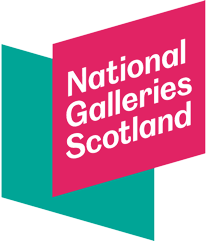
The National Galleries of Scotland is the executive non-departmental public body that controls the three national galleries of Scotland and two partner galleries, forming one of the National Collections of Scotland.

The Royal Scottish Academy building, the home of the Royal Scottish Academy, is an art museum in Edinburgh, Scotland. It is situated at the junction of The Mound and Princes Street in the centre of the city. It was built by William Henry Playfair in 1822–6. Along with the adjacent National Gallery of Scotland, their neo-classical design helped to transform Edinburgh into the cityscape known as "the Athens of the North". Today the structure is a Category A listed building.

Sir Robert Rowand Anderson, was a Scottish Victorian architect. Anderson trained in the office of George Gilbert Scott in London before setting up his own practice in Edinburgh in 1860. During the 1860s his main work was small churches in the 'First Pointed' style that is characteristic of Scott's former assistants. By 1880 his practice was designing some of the most prestigious public and private buildings in Scotland.
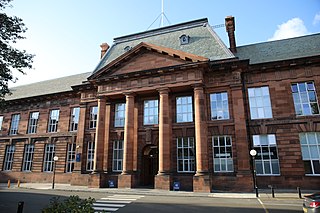
Edinburgh College of Art (ECA) is one of eleven schools in the College of Arts, Humanities and Social Sciences at the University of Edinburgh. Tracing its history back to 1760, it provides higher education in art and design, architecture, history of art, and music disciplines for over three thousand students and is at the forefront of research and research-led teaching in the creative arts, humanities, and creative technologies. ECA comprises five subject areas: School of Art, Reid School of Music, School of Design, School of History of Art, and Edinburgh School of Architecture & Landscape Architecture (ESALA). ECA is mainly located in the Old Town of Edinburgh, overlooking the Grassmarket; the Lauriston Place campus is located in the University of Edinburgh's Central Area Campus, not far from George Square.

The Royal Scottish Academy (RSA) is the country’s national academy of art. It promotes contemporary Scottish art.

Sir William Allan was a distinguished Scottish historical painter known for his scenes of Russian life. He became president of the Royal Scottish Academy and was made a Royal Academician.
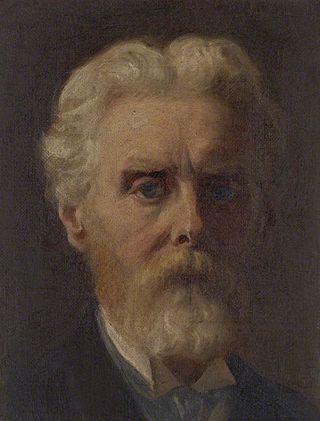
James Archer RSA, was a Scottish painter of portraits, genre works, landscapes and historical scenes.
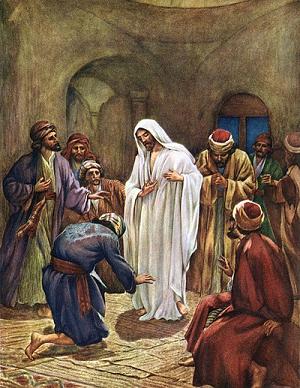
William Brassey Hole was a Scottish Victorian painter, illustrator, etcher, and engraver. He was known for his industrial, historical and biblical scenes.

Alexander Christie was a Scottish painter.

Hospitalfield House is an arts centre and historic house in Arbroath, Angus, Scotland, regarded as "one of the finest country houses in Scotland". It is believed to be "Scotland's first school of fine art" and the first art college in Britain. It is a registered charity under Scottish law. A range of prominent Scottish artists have worked there, including Joan Eardley, Peter Howson, Will Maclean, Robert Colquhoun, Robert MacBryde, William Gear, Alasdair Gray, Wendy McMurdo, and Callum Innes.
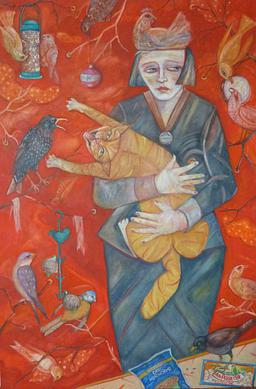
Joyce W. Cairns is a Scottish painter and printmaker based in Broughty Ferry, Scotland. In 2018, she was elected president of the Royal Scottish Academy (RSA).
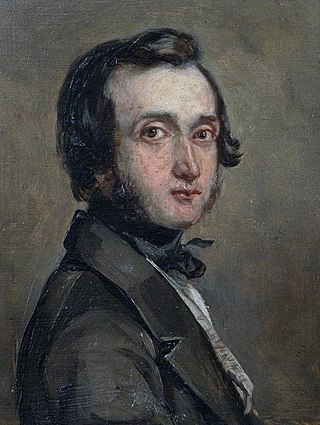
Patrick Allan Fraser was a Scottish painter and architect.
James Cowie was a Scottish painter and teacher. The quality of his portrait paintings and his strong linear style made him among the most individual Scottish painters of the 1920s and 1930s. His work displayed meticulous draughtsmanship which was based on his studies of the Old Masters and his use of many preparatory drawings.

John Hutchison was a Scottish sculptor based in Edinburgh. He was the son of an unnamed builder, and his artistic life began as a thirteen-year-old woodcarving apprentice. He attended art school in the evenings, then later became a student at the Trustees Academy. and attracted the patronage of its owner, Patrick Allan Fraser, who gave him commissions to fund his study in Rome. Although after Rome he continued to enjoy ancient Roman sculptural themes, he remained in Edinburgh for the rest of his life, working in wood, clay and marble, and concentrating on portraiture of Scottish people, and images of Scottish myth and history. He created the bust of Sir Walter Scott in Poets' Corner in Westminster Abbey. He was a successful artist who received commissions from Queen Victoria.

Norman Macbeth was a Scottish portraitist.

Adam Bruce Thomson OBE, RSA, PRSW or ‘Adam B’ as he was often called at Edinburgh College of Art, was a Scottish painter perhaps best known for his oil and water colour landscape paintings, particularly of the Highlands and Edinburgh. He is regarded as one of the Edinburgh School of artists.
Josephine Haswell Miller was a Scottish artist, who studied and later taught at the Glasgow School of Art, and exhibited at the Royal Scottish Academy (RSA).
Charles Doswell Hodder was an English painter, who spent most of his work life in Scotland. He became the Trustee' Academy's Master of the academy after Robert Scott Lauder retired.